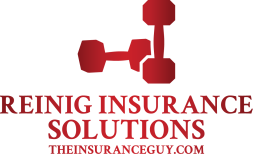Another year is coming to an end.
With each brand-spanking New Year, you will have an influx of new members coming into your health club or gym desperately trying to achieve their latest New Year’s Resolutions. They are determined to trim down, pump up, run faster etc. You know the drill.
This is the perfect time to review your club’s insurance policies and safety guidelines.
It’s the time to take action to repair or improve anything that could potentially put your club at risk. After all, no matter how buttoned-up you are, members will still find ways to injure themselves in your club. And, you just never know. It could be on someone’s list of New Year’s Resolutions to find out what it’s like to sue a health club! Don’t let them find out at the expense of your club.
Make Risk Management Part of Internal Operations
If it isn’t already, make safety and risk management part of your club’s internal operations. Make risk management issues part of your regular staff meetings. Review topics such as equipment maintenance, potentially problematic wet areas and child care procedures. In addition, review the following list of areas and ideas that can help you avoid claims in the New Year and beyond.
Don’t Waver When It Comes to Waivers
Your waiver document could be the most important piece of paper in your club. Make sure your waiver is a separate document, not buried in the membership agreement form. Make sure it is written correctly. When you have a separate Waiver & Release form you have a legal document that shows you have warned your clients about the possible dangers of working out. The waiver must state clearly that the signing member has agreed not to sue the club if they should hurt themselves. And, this is very important. Make sure your employees and contract trainers sign the same waiver. They are your first customers.
Take Immediate Action If a Member Gets Injured
When anyone is injured at your club, be it a member or employee take action. You’ll want to personally follow up with the person to make sure they are O.K. If it’s a member, you can offer to freeze their membership until they are able to return to the gym. You might send flowers, offer a free personal training session, or extend their agreement by two months. In other words, do whatever you can (within reason) to make them happy and hopefully prevent them from filing a claim.
Offering to pay for their deductible or medical co-pay does not create any admission of guilt. Be sure to document every conversation, act of kindness, and follow up call. Send an incident report to your agent and let them know your opinion as to client’s disposition during and after the incident. Taking an active role will save you time and money in the long run.
Make Repairs
Maintenance is crucial in a health club. Fix small things immediately. Don’t let them go because they can turn into big things.
Bigger issues can really set you back. If you have roof leaks you may not be able to maintain competitive property insurance rates. Not only that, if your club’s sewer and drains back up, the gutters are clogged or you need a new roof, you may not even be able to buy property insurance. Regularly check all physical aspects of the club structure and keep your property well maintained.
When it comes to exercise equipment, get rid of any “museum” pieces. Keep your equipment new and fresh, your cables updated, and your flooring (especially wet areas) safe. A simple thing like stenciling your club’s logo on all of your treadmills can help eliminate the problem of a member stepping on a moving belt because they couldn’t see if it was running or not. Old equipment is often dangerous and insurance claims involving equipment failure are nearly impossible to defend.
Here’s wishing you and yours a happy holiday and a claim-free New Year!


